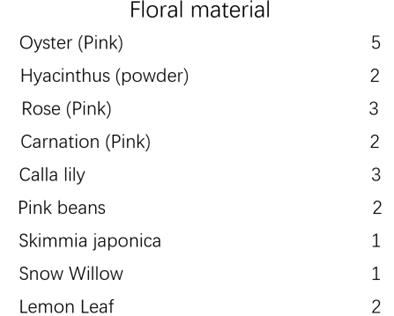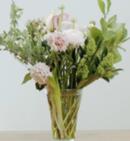1. Introduction
In the current era of rapid development in artificial intelligence technology, AI assistants have become essential tools in daily life. These assistants typically integrate advanced algorithms such as support vector machines, decision trees, random forests, as well as recurrent neural networks and long short-term memory networks from deep learning [1-3]. Through extensive data training, these models are able to recognize patterns, make predictions, or perform specific tasks. Their applications are broad, including but not limited to precise information retrieval, natural language processing in language translation, IoT integration in smart home control, personalized content generation, automation in industrial production, and high-precision analysis in image processing [4]. They significantly reduce the burden of human labor and enhance industrial productivity and efficiency. In the field of image processing, convolutional neural networks are one of the core technologies for image recognition and classification [5]. AI assistants, leveraging computer vision technology based on convolutional neural networks, demonstrate exceptional performance. Trained models can handle complex tasks including fine-grained recognition in image recognition, super-resolution reconstruction in image enhancement, missing part prediction in image completion, natural inpainting in image erasure, and creative content generation in image synthesis [6-7]. They exhibit great potential in fields such as medical image analysis and autonomous driving [8-9].
Our research team believes that AI technology holds potential value in assisting flower arrangement, with the possibility of enhancing the efficiency and quality of flower arranging through techniques such as computer vision. The decision to focus on the flower arrangement field stems from its multifaceted roles and importance in personal life and industrial production. In personal life, flower arrangement provides an aesthetic experience, satisfying people’s pursuit of beauty through combinations of color, form, and arrangement. It serves as an art form and a leisure activity, enriching people’s spiritual lives, fostering emotional expression, and helping to relieve stress, enhance creativity, and improve focus on a psychological level. In industrial production, flower arrangement can improve the aesthetics and comfort of commercial spaces, offices, and public places, creating more pleasant working and living environments. The flower arrangement industry, along with its associated products and services, constitutes a complex and diverse industrial chain that significantly contributes to economic growth and social development. This chain encompasses all stages from raw material production, design innovation, and manufacturing to marketing and final consumption. The involvement and application of AI technology in these stages have significant potential to improve production efficiency and reduce costs, yielding substantial benefits. As a form of cultural expression, flower arrangement can also promote intercultural communication and understanding. By expanding the database of AI assistants, the system can integrate flower arrangement styles from different cultural backgrounds, offering users a diverse range of choices from traditional Japanese arrangements to modern Western designs. This fosters the blending and appreciation of various cultures. Thus, from personal life to industrial production, the flower arrangement field demonstrates high practical and economic value and holds strong potential for research and development.
In the current field of flower arrangement, there are primarily two production models: manual flower arrangement and industrial process flower arrangement. Each of these models has its own characteristics and advantages, as well as its limitations. Manual flower arrangement is performed by professional florists who create personalized and customized designs based on existing floral resources and specific client needs (as shown in Figure 1). This model typically produces works with high artistic appeal and uniqueness, meeting clients’ desires for aesthetics and personalization. However, the efficiency of manual flower arrangement is relatively low because professional florists need to invest a significant amount of time and effort in designing and repeatedly adjusting each order to achieve the best artistic effect. The complex process inevitably results in time-consuming and labor-intensive drawbacks. Additionally, the number of professional florists is limited, and for non-professionals, it is challenging to replicate or achieve the same level of artistic effect.

Figure 1. Manual Flower Arrangement.
Industrial process flower arrangement uses standardized and automated production methods to produce flower arrangements on a large scale and quickly, meeting market demands for efficiency and low cost to achieve higher profit margins (as shown in Figure 2). Inevitably, industrial process flower arrangement falls short in terms of artistry and personalization, as standardized production processes struggle to meet clients’ needs for uniqueness and customization. The final products often exhibit a tendency towards uniformity, making it difficult to display dynamic and multi-layered beauty through variations in flower height, color combinations, and form changes. This contradicts the artistic intent and core value of flower arrangement.

Figure 2. Industrial Process Flower Arrangement.
Our research team is dedicated to achieving the optimal integration of artistic aesthetics and production efficiency. To this end, we have proposed and constructed an algorithmic framework designed to assist in the creation of flower arrangements. This algorithm utilizes floral recognition technology and data matching mechanisms to accurately achieve the set objectives.
The proposed algorithm comprises three core stages. First, floral material recognition involves classifying and analyzing the available floral resources. Second, data matching is performed, where the algorithm filters highly matched floral arrangements from the database to serve as design references. Finally, the realization of the floral arrangement can be carried out either manually or through automated machinery. Additionally, the research team elaborates on the methodology for constructing the required database, covering aspects such as methods for populating the database and types of data needed. Analysis of subsequent experimental data confirms the algorithm’s efficiency and feasibility in practical applications, as well as its potential value in the field of flower arrangement.
In the following sections, this paper will provide a systematic introduction: Section II will detail the research methodology adopted by the team, including but not limited to the algorithmic process, core algorithms, and partial solutions. Section III will explore the strategies and implementation process for database construction, including data sources, filtering, and storage technologies. Section IV will present the experimental results of the research, demonstrating the feasibility of the study. Finally, Section V will summarize the research findings and present the main conclusions.
2. Proposed Method
This section introduces a new method for smart flower arrangement. As shown in Figure 3 this method includes three steps: flower material recognition, data matching, and realization of the flower arrangement. Using image recognition technology, target detection is applied to images of existing floral resources to accurately identify the types, colors, and quantities of the flowers [10]. By comparing the data of existing floral resources with the floral arrangements in the database, the algorithm filters out the flower arrangement designs that best match the existing resources. The flower arrangement creation process is then completed by either manual or automated means, guided by the algorithm’s matching results.

Figure 3. Flowchart.
The proposed algorithm provides a theoretical foundation for the automation and intelligence of flower arranging, enhancing the efficiency of flower arrangement creation while maintaining the artistic effect of the work.
2.1. Flower Material Recognition
This step primarily utilizes target detection technology. Based on the research objectives of this study, the YOLO method is selected as the core approach for target detection [11-12]. The YOLO algorithm is a target detection framework that simplifies the task of target detection into a single, fast regression problem. The principles of the YOLO algorithm are as follows:
(1) Unified Detection Model: YOLO treats target detection as a unified regression problem.
(2) Image Grid Partitioning: YOLO divides the input image into an S×S grid. If the center of a target falls within a specific grid, that grid is responsible for predicting the target.
(3) Bounding Box Prediction: Each grid predicts X bounding boxes, with each bounding box represented by 5 values: (x, y, w, h, conf). Here, (x, y) represents the offset of the bounding box center relative to the grid, (w, h) denotes the width and height of the bounding box, and conf is the confidence that the bounding box contains the target.
(4) Class Prediction: In addition to bounding boxes, each grid also predicts a class probability distribution, providing a probability vector of length C for C classes.
(5) Confidence: Confidence is a value between 0 and 1 that indicates whether a target is present in the grid and how accurate the predicted bounding box is. The confidence conf is composed of two parts: conf = Pr(Object) × IOUpred, where Pr(Object) represents the probability of a target being present in the grid, and IOUpred is the Intersection over Union (IoU) between the predicted bounding box and the true bounding box.
(6) Loss Function: YOLO uses a composite loss function that includes squared errors of bounding box coordinates, binary cross-entropy loss for confidence, and cross-entropy loss for class predictions. The design of the loss function aims to optimize the accuracy of bounding boxes and class predictions.
These design principles make the YOLO algorithm highly efficient for target detection tasks, especially in applications requiring real-time processing. This aligns well with the needs of this study to determine the types, colors, and quantities of floral resources. The use of this algorithm can quickly and efficiently determine floral resource data, providing a solid foundation for the next steps.
2.2. Data Matching
After obtaining floral resources, the algorithm needs to perform precise matching in the database to find the flower arrangement designs that are most similar to user requirements and existing resources, and that offer optimized visual performance. This process requires the construction of a comprehensive database, which should include a large collection of completed flower arrangement works, as well as detailed information on the floral components and the arrangement positions of these works. The database design should ensure efficient search performance to enable quick responses to user needs and high-quality outputs. Based on the existing database, this study uses the current floral resources as a benchmark for data matching [13]. Considering attributes such as customer needs, flower types, colors, and quantities, a weighting and ranking algorithm is applied to prioritize the flower arrangement works stored in the database [14]. The ranking process is conducted based on the weights of attributes like type, color, and quantity in descending order, to ensure the accuracy of the search results as much as possible. Ultimately, the system will select the flower arrangement works with the highest match to the current floral resources as recommended outputs, providing a basis and reference for subsequent flower arrangement design.
2.3. Realization of Flower Arrangements
In 2.2, the research team successfully obtained a precise flower arrangement design scheme through data matching. For this scheme, two execution strategies are employed: first, manual flower arrangement, which allows for non-professionals to be hired for the arrangement or for clients to conduct the flower arrangement process themselves, without being limited by the florist’s professional knowledge; second, automated flower arrangement technology, which relies on advanced robotic systems equipped with multiple high-resolution cameras and more than two multi-axis robotic arms. This technology enables precise cutting of floral materials and accurate layout according to the design scheme, ensuring that the final work achieves the maximum artistic effect as specified in the design scheme. Both execution strategies can produce the required final work, and the appropriate strategy can be chosen based on the actual situation and use case.
3. Database Creation
In this study, the database meticulously records the elements of flower arrangement works, including but not limited to flower types, colors, and quantities. Additionally, it documents the dimensions of floral materials before placement and the anticipated arrangement positions. This information in the database is not only crucial for data matching but also serves as the foundation for guiding the precise execution of the flower arrangement process. These details provide the necessary parameters and references for creating flower arrangements, whether in manual or automated systems, to achieve accurate reproduction and artistic expression of the works.
The research team employed two strategies to enrich the database content. The first strategy is web collection, which involves retrieving and downloading existing flower arrangement artworks from the internet to serve as initial data for the database. The advantage of this approach lies in its ability to quickly acquire a large volume of data; however, it also has limitations in terms of originality. In the current online environment, resources for flower arrangement artworks are primarily found on video sharing platforms, such as YouTube and TikTok. Creators on these platforms upload numerous flower arrangement videos with detailed instructional content, covering various data needed for database construction, such as floral materials, quantities, and placement methods. Furthermore, flower enthusiasts and horticulturists often gather on specialized forums, such as Flower World Forum and Gardeners’ Forum, to share their flower arrangement works and creation processes. However, collecting and organizing this data requires manual effort to systematize and integrate it into the database. This process involves selecting, categorizing, and digitizing internet resources to ensure data quality and usability, thereby supporting data matching and the realization of works.
The second strategy is professional creation, which involves hiring qualified flower arrangement artists to design original flower arrangements. Although this method may be less efficient than the former, it significantly enhances the originality and artistic value of the works. Suitable candidates can be sourced from local flower shops, where practitioners typically have professional skills and a deep understanding of the flower market. Additionally, posting recruitment information on online platforms can attract individuals with flower arrangement skills and interests to participate in the project, contributing design ideas for flower arrangements. Engaging with creators from forums and video platforms, inviting them to participate in database content creation, is also an effective strategy. The works created by these designers need to be professionally organized and digitized to ensure they meet the database format and standards and have good retrievability, facilitating subsequent steps. Both strategies have their advantages and disadvantages, and the team will consider and balance their use based on research objectives and resource conditions to achieve optimal database development.
4. Experimental Results
Throughout the various stages of this research, the performance exhibited was satisfactory. The input and output at each step met the predefined expectations, ensuring the coherence and accuracy of the study. The experimental process successfully yielded flower arrangement works with favorable results.
(1) Flower Material Image Input
Existing flower materials were captured through image acquisition, and the obtained image data were input into the system (see Figure 4).

Figure 4. Display of Flower Materials.
(2) Flower Material Recognition
An artificial intelligence model constructed using computer vision technology was employed to recognize and analyze the images of the existing flower materials, extracting data on flower types and other characteristics (see Figure 5).

Figure 5. List of Flower Material Resources.
(3) Data Matching
The feature data extracted from the flower material recognition process were matched and analyzed against the flower data stored in the database. By calculating similarity, the algorithm evaluated and recommended the optimal solution that best matches the input flower materials. Additionally, the system provided several secondary options based on the degree of matching to offer users diverse choices (see Figure 6).



Figure 6. Optional Solutions (Best Match on the Right).
(4) Implementation of Flower Arrangement Effects
Based on the optimal solution and alternative options provided by the system, users performed a comprehensive evaluation and selected according to personal preferences. Once the solution was determined, the flower arrangement process could be executed either manually or using automated mechanical equipment to complete the flower arrangement work.
5. Conclusion
This paper introduces an innovative intelligent flower arrangement assistance system designed to efficiently and aesthetically assist in creating flower arrangements. The system encompasses three main processes: flower material recognition, data matching, and the final implementation of flower arrangements. Flower material recognition is responsible for extracting relevant data from input images of flower resources, data matching involves retrieving and matching suitable flower arrangement works from the database, and the implementation process is carried out through manual techniques or automated machinery. Additionally, the research team detailed the database construction methods and the experimental results and data, demonstrating the feasibility and completeness of the system.
References
[1]. Huang, A. (2009). Improvement and application of the decision tree C4.5 algorithm. Science Technology and Engineering, 9(1), 34-36. https://doi.org/10.3969/j.issn.1671-1815.2009.01.009
[2]. Graves, A., Mohamed, A. R., & Hinton, G. (2013). Speech recognition with deep recurrent neural networks. In IEEE International Conference on Acoustics (pp. 664-668). IEEE. https://doi.org/10.1109/ICASSP.2013.6638947
[3]. Lipton, Z. C., Kale, D. C., Elkan, C., & others. (2017). Learning to diagnose with LSTM recurrent neural networks. Computer Science. https://doi.org/10.48550/arXiv.1511.03677
[4]. Hayati, N., Ramli, K., Suryanegara, M., & others. (2021). An Internet of Things (IoT) reference model for an infectious disease active digital surveillance system. International Journal of Advanced Computer Science and Applications, 12(9), 1-10. https://doi.org/10.14569/ijacsa.2021.0120956
[5]. Jia, S., Li, Y., & Noman, M. K. (2023). Multi-representation symbolic convolutional neural network: A novel multisource cross-domain fault diagnosis method for rotating systems. Structural Health Monitoring, 22(10), 7211-7219. https://doi.org/10.1177/14759217231157487
[6]. Austin, J., Pears, N., & Heseltine, T. (2024). Image recognition. US Patent No. 10575739. https://doi.org/US07689043B2
[7]. Sekeroglu, B. (2023). Time-shift image enhancement method. Image and Vision Computing, 138(Oct.), 1.1-1.13.
[8]. Helaly, H. A., Badawy, M., & Haikal, A. Y. (2024). A review of deep learning approaches in clinical and healthcare systems based on medical image analysis. Multimedia Tools and Applications, 83(12).
[9]. Bao, D., & Gao, R. (2024). YED-YOLO: An object detection algorithm for automatic driving. Signal, Image and Video Processing, 18(10), 7211-7219. https://doi.org/10.1007/s11760-024-03387-8
[10]. Lin, T. Y., Dollar, P., Girshick, R., & others. (2017). Feature pyramid networks for object detection. In IEEE Computer Society Conference on Computer Vision and Pattern Recognition (pp. 2117-2125). IEEE. https://doi.org/10.1109/CVPR.2017.106
[11]. Redmon, J., Divvala, S., Girshick, R., & others. (2016). You only look once: Unified, real-time object detection. In Computer Vision and Pattern Recognition (pp. 779-788). IEEE. https://doi.org/10.1109/CVPR.2016.91
[12]. Wang, C.-Y., Yeh, I.-H., Liao, H.-Y. M., & others. (2024). YOLOv9: Learning what you want to learn using programmable gradient information. Computer Vision. https://doi.org/10.48550/arXiv.2402.13616
[13]. Abassi, M. E., Amnai, M., Choukri, A. F. Y. G. N. (2023). Matching data detection for the integration system. International Journal of Electrical and Computer Engineering, 13(1), 1008-1014.
[14]. Pan, L.-L., Wang, T.-E., & others. (2015). Test case priority sorting algorithm based on fixed-value reference chains. In Proceedings of the Chinese Computer Federation (pp. 123-129). Chinese Computer Federation.
Cite this article
Huang,L. (2024). New intelligent flower arrangement system. Applied and Computational Engineering,95,118-125.
Data availability
The datasets used and/or analyzed during the current study will be available from the authors upon reasonable request.
Disclaimer/Publisher's Note
The statements, opinions and data contained in all publications are solely those of the individual author(s) and contributor(s) and not of EWA Publishing and/or the editor(s). EWA Publishing and/or the editor(s) disclaim responsibility for any injury to people or property resulting from any ideas, methods, instructions or products referred to in the content.
About volume
Volume title: Proceedings of the 6th International Conference on Computing and Data Science
© 2024 by the author(s). Licensee EWA Publishing, Oxford, UK. This article is an open access article distributed under the terms and
conditions of the Creative Commons Attribution (CC BY) license. Authors who
publish this series agree to the following terms:
1. Authors retain copyright and grant the series right of first publication with the work simultaneously licensed under a Creative Commons
Attribution License that allows others to share the work with an acknowledgment of the work's authorship and initial publication in this
series.
2. Authors are able to enter into separate, additional contractual arrangements for the non-exclusive distribution of the series's published
version of the work (e.g., post it to an institutional repository or publish it in a book), with an acknowledgment of its initial
publication in this series.
3. Authors are permitted and encouraged to post their work online (e.g., in institutional repositories or on their website) prior to and
during the submission process, as it can lead to productive exchanges, as well as earlier and greater citation of published work (See
Open access policy for details).
References
[1]. Huang, A. (2009). Improvement and application of the decision tree C4.5 algorithm. Science Technology and Engineering, 9(1), 34-36. https://doi.org/10.3969/j.issn.1671-1815.2009.01.009
[2]. Graves, A., Mohamed, A. R., & Hinton, G. (2013). Speech recognition with deep recurrent neural networks. In IEEE International Conference on Acoustics (pp. 664-668). IEEE. https://doi.org/10.1109/ICASSP.2013.6638947
[3]. Lipton, Z. C., Kale, D. C., Elkan, C., & others. (2017). Learning to diagnose with LSTM recurrent neural networks. Computer Science. https://doi.org/10.48550/arXiv.1511.03677
[4]. Hayati, N., Ramli, K., Suryanegara, M., & others. (2021). An Internet of Things (IoT) reference model for an infectious disease active digital surveillance system. International Journal of Advanced Computer Science and Applications, 12(9), 1-10. https://doi.org/10.14569/ijacsa.2021.0120956
[5]. Jia, S., Li, Y., & Noman, M. K. (2023). Multi-representation symbolic convolutional neural network: A novel multisource cross-domain fault diagnosis method for rotating systems. Structural Health Monitoring, 22(10), 7211-7219. https://doi.org/10.1177/14759217231157487
[6]. Austin, J., Pears, N., & Heseltine, T. (2024). Image recognition. US Patent No. 10575739. https://doi.org/US07689043B2
[7]. Sekeroglu, B. (2023). Time-shift image enhancement method. Image and Vision Computing, 138(Oct.), 1.1-1.13.
[8]. Helaly, H. A., Badawy, M., & Haikal, A. Y. (2024). A review of deep learning approaches in clinical and healthcare systems based on medical image analysis. Multimedia Tools and Applications, 83(12).
[9]. Bao, D., & Gao, R. (2024). YED-YOLO: An object detection algorithm for automatic driving. Signal, Image and Video Processing, 18(10), 7211-7219. https://doi.org/10.1007/s11760-024-03387-8
[10]. Lin, T. Y., Dollar, P., Girshick, R., & others. (2017). Feature pyramid networks for object detection. In IEEE Computer Society Conference on Computer Vision and Pattern Recognition (pp. 2117-2125). IEEE. https://doi.org/10.1109/CVPR.2017.106
[11]. Redmon, J., Divvala, S., Girshick, R., & others. (2016). You only look once: Unified, real-time object detection. In Computer Vision and Pattern Recognition (pp. 779-788). IEEE. https://doi.org/10.1109/CVPR.2016.91
[12]. Wang, C.-Y., Yeh, I.-H., Liao, H.-Y. M., & others. (2024). YOLOv9: Learning what you want to learn using programmable gradient information. Computer Vision. https://doi.org/10.48550/arXiv.2402.13616
[13]. Abassi, M. E., Amnai, M., Choukri, A. F. Y. G. N. (2023). Matching data detection for the integration system. International Journal of Electrical and Computer Engineering, 13(1), 1008-1014.
[14]. Pan, L.-L., Wang, T.-E., & others. (2015). Test case priority sorting algorithm based on fixed-value reference chains. In Proceedings of the Chinese Computer Federation (pp. 123-129). Chinese Computer Federation.









